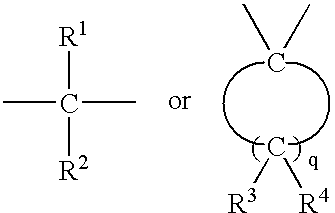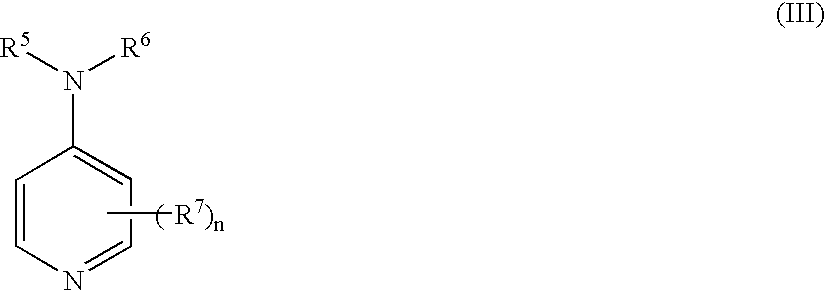Wholly aromatic polyester and production process therefor
a technology of aromatic polyester and production process, which is applied in the direction of chemistry apparatus and processes, organic chemistry, and lactam stabilisation, etc., can solve the problems of high labor intensity, high cost and difficulty in building a closed system capable of completely recycling methylene chloride, and marked coloring
- Summary
- Abstract
- Description
- Claims
- Application Information
AI Technical Summary
Benefits of technology
Problems solved by technology
Method used
Image
Examples
example 1
24.9 parts of terephthalic acid, 24.9 parts of isophthalic acid, 68.5 parts of 2,2-bis(4-hydroxyphenyl)propane, 128.5 parts of diphenyl carbonate, 0.037 part of 4-dimethylaminopyridine and 0.012 part of potassium carbonate were charged into a reactor having a vacuum distillation-out system equipped with a stirrer and nitrogen introduction port and the inside of the reactor was substituted by nitrogen to start a reaction at 200.degree. C. After 30 minutes, the temperature was raised to 220.degree. C. to continue the reaction at that temperature for 30 minutes. After the temperature was further raised to 240.degree. C. and it was confirmed that phenol distilled out, the inside pressure of the system was gradually reduced. 4 hours after the start of the reaction, it was confirmed that the raw materials were uniformly dissolved. Thereafter, by further raising the temperature and further reducing the pressure, 6 hours after the start of the reaction, the inside of the system was set to a...
example 2
The procedure of Example 1 was repeated except that the amount of terephthalic acid was changed to 34.9 parts and the amount of isophthalic acid was changed to 15.0 parts. The obtained polymer was light yellow and transparent and had a reduced viscosity of 0.75 dl / g.
example 3
The procedure of Example 1 was repeated except that the amount of terephthalic acid was changed to 37.4 parts and the amount of isophthalic acid was changed to 12.5 parts. The obtained polymer was light yellow and transparent and had a reduced viscosity of 0.64 dl / g.
PUM
| Property | Measurement | Unit |
|---|---|---|
| temperature | aaaaa | aaaaa |
| boiling point | aaaaa | aaaaa |
| mol % | aaaaa | aaaaa |
Abstract
Description
Claims
Application Information
 Login to View More
Login to View More - R&D
- Intellectual Property
- Life Sciences
- Materials
- Tech Scout
- Unparalleled Data Quality
- Higher Quality Content
- 60% Fewer Hallucinations
Browse by: Latest US Patents, China's latest patents, Technical Efficacy Thesaurus, Application Domain, Technology Topic, Popular Technical Reports.
© 2025 PatSnap. All rights reserved.Legal|Privacy policy|Modern Slavery Act Transparency Statement|Sitemap|About US| Contact US: help@patsnap.com



